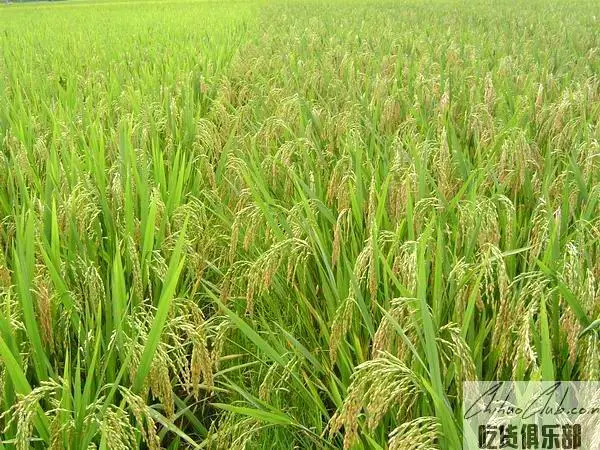
Sujiatun Rice (Hongling Rice)
-
Update date::
-
Date of protection::
-
Protected range:Sujiatun Rice (Hongling Rice) is produced in Hongling Sub-district Office, Yongle Sub-district Office, Wanggang Sub-district Office, Bayi Sub-district Office, Linsheng Sub-district Office, Shilihe Street, Sujiatun District, Liaoning Province. The office and the Chenxiang Sub-district Office have a total of 7 sub-district offices in the administrative area.
-
Category:
Located in the southern suburbs of Shenyang, Sujiatun District is known as the “first in the world”. Located in the heart of the central Liaoning urban agglomeration, the location is extremely advantageous. The climate is mild, the rainfall is moderate, and sunshine is sufficient. It is the national commodity grain base, the pollution-free rice agricultural standardization demonstration zone, the grain self-sufficiency project demonstration zone, and the Liaoning agricultural standardization production demonstration zone. Sujiatun District is one of the most suitable areas for rice cultivation in the world. Rice cultivation has a long history, and Sujiatun Rice (Hongling Rice) has been selling well all over the country.
Sujiatun Rice (Hongling Rice), a specialty of Sujiatun District, Shenyang City, Liaoning Province. Sujiatun Rice (Hongling Rice) is a regional brand and characteristic product of the region. It has been gradually developed through long-term inheritance, excavation, innovation and cultivation, and has obvious characteristics and protection value as geographical indication products. Sujiatun District has a long history of rice planting. It can be traced back to the Shunzhi Period of the Qing Dynasty. It was one of the earliest areas for planting rice in Liaoning. It was once the court of the Qing Dynasty, and formed "Hongling Rice" and "Su" in the province. The family is called "rice". Located in the southern suburbs of Shenyang, Sujiatun District is known as the “first in the world”. Located in the heart of the central Liaoning urban agglomeration, the location is extremely advantageous. The climate is mild, rainfall is moderate, and sunshine is sufficient. It is the national commodity grain base, the pollution-free rice agricultural standardization demonstration zone, the grain self-sufficiency project demonstration zone, and the Liaoning agricultural standardization production demonstration zone. Sujiatun District is one of the most suitable areas for rice cultivation in the world. Rice cultivation has a long history, and Sujiatun Rice (Hongling Rice) has been selling well all over the country. Since the “Eleventh Five-Year Plan”, Sujiatun District has invested 10 million yuan each year to develop and build the Sujiatun Rice (Hongling Rice) industry, and actively support the cultivation of rice deep processing enterprises and rice production professional cooperatives. At present, the rice production area of the whole region has reached more than 200,000 mu, with an annual output of 120,000 tons. It has built 10 national food production high-yield demonstration zones, introduced 21 rice processing enterprises, and established 18 rice cooperatives, forming a planting base. Production has standards, products have brands, technology experts, production materials, services, associations and cooperatives, sales and market-oriented industrial management, providing farmers with a strong guarantee to increase income. In recent years, Sujiatun District has fully tapped the advantages of resources and fully introduced a number of rice deep processing enterprises such as COFCO Group, Tianyuan Milu and Liaoxing Rice Industry, and realized the further extension of the industrial chain of Sujiatun Rice (Hongling Rice). The production of fine rice, rice bran oil, rice drinks and other products has greatly increased the added value of rice. Quality characteristics: Sujiatun rice (Hongling rice) is full of grain, moderate length and width, white color, fragrant smell, small whiteness and good taste quality. The quality indicators of Sujiatun rice have reached the high quality rice standard, and have the unique characteristics of Sujiatun rice in color and smell. Among the various physical and chemical indicators, Sujiatun rice also has obvious advantages, such as low gelatinization temperature, low amylose content, high gel consistency and rich protein and amino acid content.
Quality Technical Requirements for Sujiatun Rice (Hongling Rice) I. Variety Liaojing 294, Liaoxing 1, Yanjing 48 and suitable varieties of japonica rice cultivated in suitable producing areas. Second, the site conditions meadow type paddy soil or sandy loam soil, the soil layer thickness is not less than 60cm, organic matter content ≥ 2%, pH value 6.5 to 7.5. Third, cultivation management Breeding: Using dry breeding technology, planting from April 10 to 15, the breeding period is about 35 days. Seeding rate ≤ 420g / m2. 2. Transplanting: transplanted from May 10 to May 25, density ≤ 240,000 points / hectare, 3 to 4 per hole. 3. Fertilization: application of decomposed organic fertilizer ≥ 30t / hectare. 4. Harvest: Harvest in the first half of October, naturally dry, according to the variety, single storage, single storage. 5. Environmental and safety requirements: The use of pesticides, fertilizers, etc. must comply with relevant national regulations and must not pollute the environment. Fourth, processing rice → screening → stone removal → magnetic selection → Shibuya → valley rough separation → rice milling → selection → color selection → polishing → packaging. V. Quality characteristics 1. Sensory features: rice grain is crystal clear and smooth. When cooking, the rice grains are intact, soft, oily, and long-lasting. After the rice is cool, it does not return to life and is sticky, and has good taste. 2. 3. Safety and other quality technical requirements: Product safety and other quality technical requirements must comply with relevant national regulations.
Apply to:
Producers within the scope of production of Sujiatun Rice (Hongling Rice) may apply to the Quality and Technical Supervision Bureau of Sujiatun District of Liaoning Province for the use of the “Special Mark for Geographical Indication Products”, which is reviewed by the Liaoning Quality and Technical Supervision Bureau. Announcement after approval by the General Administration of Quality Supervision, Inspection and Quarantine. The testing organization of Sujiatun Rice (Hongling Rice) is selected by the Quality and Technical Supervision Bureau of Liaoning Province in the testing institutions that meet the qualification requirements.